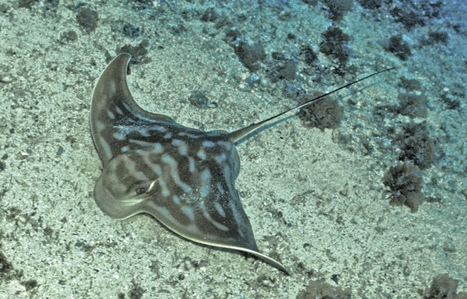General Description
Head thick, with a broad margin and a fleshy lobe around the snout continuous with the wings; disc short, broad, with smooth skin and a deep notch beside the eye; dorsal-fin origin near rear tips of pelvic fins; tail long, whip-like with a venomous spine just behind the small dorsal fin. Upperside greenish to yellowish-brown with pale bluish blotches or bands, underside pale. To 1.6 m.
Biology
These rays feed on small fishes and invertebrates such as crabs, molluscs and polychaete worms. Females give birth to live young. They are taken as bycatch in trawl fisheries.
Habitat
Common inshore near beaches, sandy shoals and sand flats, to depth of 130 m.
Soft substrates
Distribution guide
Southern Australia.
Species Group
Sharks and rays › Stingrays, stingarees and allies
Depth
Shallow (1-30 m)
Deep ( > 30 m)
Water Column
Max Size
1.6 m
Diet
Carnivore
Harmful
Not usually considered dangerous to humans, but venomous spine on tail can cause injury.
Commercial Species
No
Global Dispersal
Native to Australia
Conservation Status
- DSE Advisory List : Not listed
- EPBC Act 1999 : Not listed
- IUCN Red List : Least Concern





